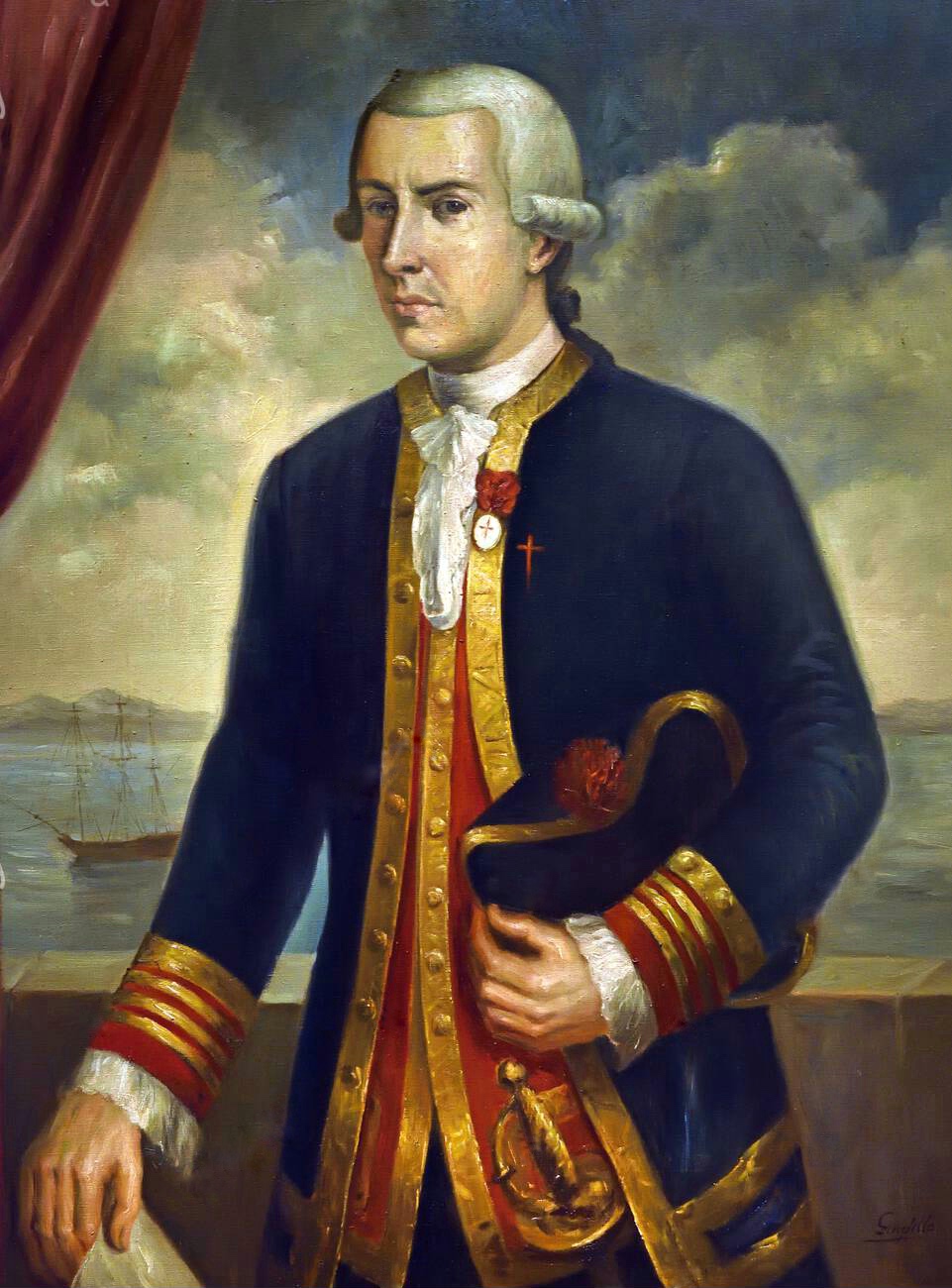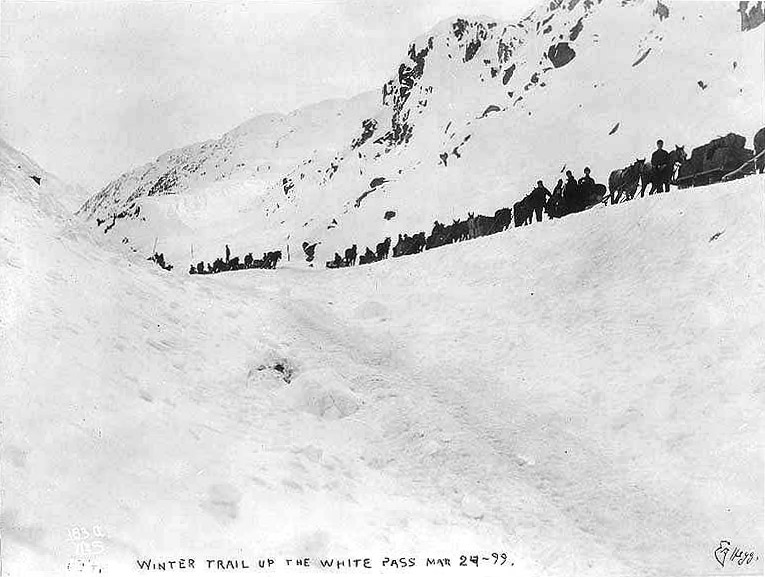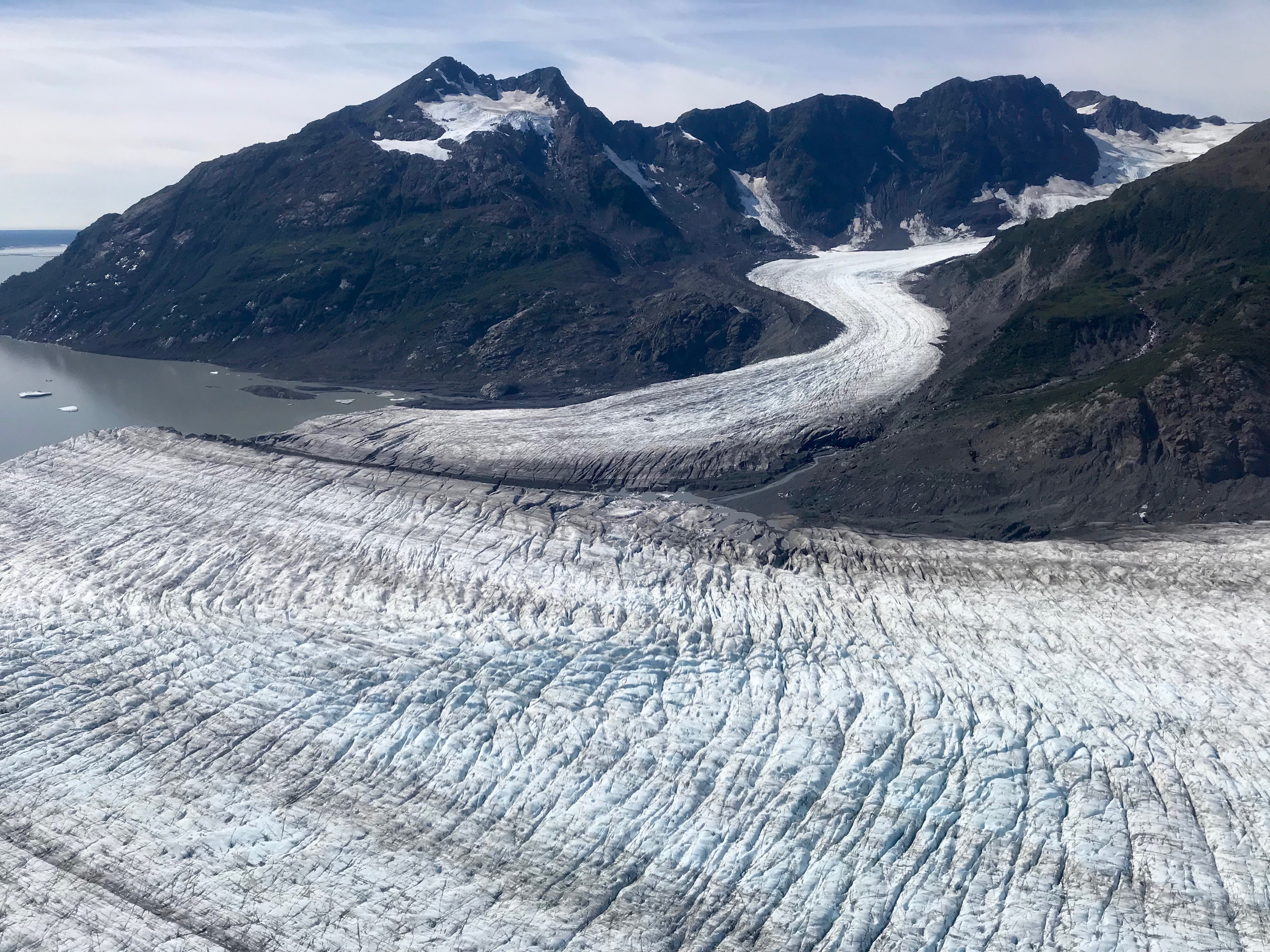|
Chilkat Pass
The Chilkat Pass is a mountain pass on the border of Alaska, United States, and the province of British Columbia, Canada, at the divide between the Klehini (S) and Kelsall Rivers just northwest of Haines, Alaska. At an elevation of 3510 ft (1070 m), it is used by the Haines Highway and was the route used by the Dalton Trail during the days of the Klondike Gold Rush. It also marks the boundary between the Coast Mountains and Saint Elias Mountains. The pass is named for the Chilkat subgroup of the Tlingit people, who reside in the Haines area and until the gold rush controlled use of the route. See also *Chilkoot Pass *White Pass White Pass, also known as the Dead Horse Trail, (elevation ) is a mountain pass through the Boundary Ranges of the Coast Mountains on the border of the U.S. state of Alaska and the province of British Columbia, Canada. It leads from Skagway, Ala ... References * Mountain passes of British Columbia Mountain passes of Alaska Klondike Gol ... [...More Info...] [...Related Items...] OR: [Wikipedia] [Google] [Baidu] |
Chilkat Pass
The Chilkat Pass is a mountain pass on the border of Alaska, United States, and the province of British Columbia, Canada, at the divide between the Klehini (S) and Kelsall Rivers just northwest of Haines, Alaska. At an elevation of 3510 ft (1070 m), it is used by the Haines Highway and was the route used by the Dalton Trail during the days of the Klondike Gold Rush. It also marks the boundary between the Coast Mountains and Saint Elias Mountains. The pass is named for the Chilkat subgroup of the Tlingit people, who reside in the Haines area and until the gold rush controlled use of the route. See also *Chilkoot Pass *White Pass White Pass, also known as the Dead Horse Trail, (elevation ) is a mountain pass through the Boundary Ranges of the Coast Mountains on the border of the U.S. state of Alaska and the province of British Columbia, Canada. It leads from Skagway, Ala ... References * Mountain passes of British Columbia Mountain passes of Alaska Klondike Gol ... [...More Info...] [...Related Items...] OR: [Wikipedia] [Google] [Baidu] |
Chilkat People
Chilkat or The Chilkat, or Chilkats, may refer to: Chilkat tribe and related uses * Chilkat Tlingit, a tribe found on the Chilkat River and on Chilkat Peninsula ** Chilkat Reservation, a U.S. Indian Reservation in Alaska, see List of Indian reservations in the United States * Chilkat weaving, a traditional form of weaving practiced by Tlingit, Haida, Tsimshian, and other Northwest Coast peoples of Alaska and British Columbia. ** Chilkat blanket, a type of blanket which uses Chilkat weaving In geography * Chilkat Range or ''Chilkat Mountains'', a mountain range in Haines Borough, Alaska, USA * Chilkat Pass, a mountain pass between BC, Canada and Alaska, USA over the Coast Mountains, lying on the Dalton Trail and Haines Highway * ''Chilkat Trail'' or Dalton Trail, a Klondike Gold Rush Trail between coastal Alaska and the goldfields in the Yukon * Chilkat Peninsula, a peninsula in southeast Alaska that divides the Chilkat Inlet from the Chilkoot Inlet * Chilkat Inlet, the termin ... [...More Info...] [...Related Items...] OR: [Wikipedia] [Google] [Baidu] |
Landforms Of Haines Borough, Alaska
A landform is a natural or anthropogenic land feature on the solid surface of the Earth or other planetary body. Landforms together make up a given terrain, and their arrangement in the landscape is known as topography. Landforms include hills, mountains, canyons, and valleys, as well as shoreline features such as bays, peninsulas, and seas, including submerged features such as mid-ocean ridges, volcanoes, and the great ocean basins. Physical characteristics Landforms are categorized by characteristic physical attributes such as elevation, slope, orientation, stratification, rock exposure and soil type. Gross physical features or landforms include intuitive elements such as berms, mounds, hills, ridges, cliffs, valleys, rivers, peninsulas, volcanoes, and numerous other structural and size-scaled (e.g. ponds vs. lakes, hills vs. mountains) elements including various kinds of inland and oceanic waterbodies and sub-surface features. Mountains, hills, plateaux, and plains are the fou ... [...More Info...] [...Related Items...] OR: [Wikipedia] [Google] [Baidu] |
History Of Yukon
The history of Yukon covers the period from the arrival of Paleo-Indians through the Beringia land bridge approximately 20,000 years ago. In the 18th century, Russian explorers began to trade with the First Nations people along the Alaskan coast, and later established trade networks extending into Yukon. By the 19th century, traders from the Hudson's Bay Company were also active in the region. The region was administered as a part of the North-Western Territory until 1870, when the United Kingdom transferred the territory to Canada and it became the North-West Territories. After gold was discovered in the Klondike region in 1896, the area saw a large influx of prospectors enter into the region in search of gold. Due to the large influx of prospectors into the region, the western portion of the North-West Territories was split from the rest of the territory in 1898 to form the Yukon Territory. Although the gold rush ended by the turn of the century, mining developments conti ... [...More Info...] [...Related Items...] OR: [Wikipedia] [Google] [Baidu] |
History Of British Columbia
The history of British Columbia covers the period from the arrival of Paleo-Indians thousands of years ago to the present day. Prior to European colonization, the lands encompassing present-day British Columbia were inhabited for millennia by a number of First Nations. Several European expeditions to the region were undertaken in the late 18th and early 19th centuries. After the Oregon boundary dispute between the UK and US government was resolved in 1846, the colonies of Vancouver Island and colony of British Columbia were established; the former in 1849 and the latter in 1858. The two colonies were merged to form a single colony in 1866, which later joined the Canadian Confederation on 20 July 1871. An influential historian of British Columbia, Margaret Ormsby, presented a structural model of the province's history in ''British Columbia: A History'' (1958); that has been adopted by numerous historians and teachers. Chad Reimer says, "in many aspects, it still has not been ... [...More Info...] [...Related Items...] OR: [Wikipedia] [Google] [Baidu] |
Mountain Passes Of Alaska
A mountain is an elevated portion of the Earth's crust, generally with steep sides that show significant exposed bedrock. Although definitions vary, a mountain may differ from a plateau in having a limited summit area, and is usually higher than a hill, typically rising at least 300 metres (1,000 feet) above the surrounding land. A few mountains are isolated summits, but most occur in mountain ranges. Mountains are formed through tectonic forces, erosion, or volcanism, which act on time scales of up to tens of millions of years. Once mountain building ceases, mountains are slowly leveled through the action of weathering, through slumping and other forms of mass wasting, as well as through erosion by rivers and glaciers. High elevations on mountains produce colder climates than at sea level at similar latitude. These colder climates strongly affect the ecosystems of mountains: different elevations have different plants and animals. Because of the less hospitable terrain and ... [...More Info...] [...Related Items...] OR: [Wikipedia] [Google] [Baidu] |
Mountain Passes Of British Columbia
A mountain is an elevated portion of the Earth's crust, generally with steep sides that show significant exposed bedrock. Although definitions vary, a mountain may differ from a plateau in having a limited summit area, and is usually higher than a hill, typically rising at least 300 metres (1,000 feet) above the surrounding land. A few mountains are isolated summits, but most occur in mountain ranges. Mountains are formed through tectonic forces, erosion, or volcanism, which act on time scales of up to tens of millions of years. Once mountain building ceases, mountains are slowly leveled through the action of weathering, through slumping and other forms of mass wasting, as well as through erosion by rivers and glaciers. High elevations on mountains produce colder climates than at sea level at similar latitude. These colder climates strongly affect the ecosystems of mountains: different elevations have different plants and animals. Because of the less hospitable terrain and ... [...More Info...] [...Related Items...] OR: [Wikipedia] [Google] [Baidu] |
White Pass
White Pass, also known as the Dead Horse Trail, (elevation ) is a mountain pass through the Boundary Ranges of the Coast Mountains on the border of the U.S. state of Alaska and the province of British Columbia, Canada. It leads from Skagway, Alaska, to the chain of lakes at the headwaters of the Yukon River, Crater Lake, Lake Lindeman, and Bennett Lake. History The White Pass was closely controlled by the Chilkoot Indians and was unknown to non-natives until 1887. William Ogilvie had heard reports of a low pass near the Deyes Inlet to the headwaters of the Lewes River (Yukon River), while in Juneau. The Ogilvie expedition was on its way to the Yukon territory in order to survey and mark the international boundary on the Yukon River. In June 1887, Ogilvie's expedition was at the head of Taiya Inlet doing a survey from Pyramid Island up through the Chilkoot Pass. William Moore, who had travelled up from Juneau on the steamer, had experience building roads in mountainous area ... [...More Info...] [...Related Items...] OR: [Wikipedia] [Google] [Baidu] |
Chilkoot Pass
Chilkoot Pass (el. ) is a high mountain pass through the Boundary Ranges of the Coast Mountains in the U.S. state of Alaska and British Columbia, Canada. It is the highest point along the Chilkoot Trail that leads from Dyea, Alaska to Bennett Lake, British Columbia. The Chilkoot Trail was long a route used by the Tlingit for trade. During the Klondike Gold Rush of the late 19th century, it was used by prospectors and packers to get through the mountains. During the gold rush, three aerial tramways and several surface hoists were constructed and operated briefly over the pass. When the White Pass and Yukon Route Railroad was built in neighboring White Pass, the Chilkoot Pass route fell out of favor with miners. The Pass and the Trail are administered by the national park services of the U.S. and Canada. On the B.C. side, it is administered as Chilkoot Trail National Historic Site. On the Alaska side, it is one unit of the Klondike Gold Rush National Historical Park. In the sum ... [...More Info...] [...Related Items...] OR: [Wikipedia] [Google] [Baidu] |
Tlingit People
The Tlingit ( or ; also spelled Tlinkit) are indigenous peoples of the Pacific Northwest Coast of North America. Their language is the Tlingit language (natively , pronounced ),"Lingít Yoo X'atángi: The Tlingit Language." ''Sealaska Heritage Institute.'' (retrieved 3 December 2009) in which the name means 'People of the Tides'.Pritzker, 208 The Russian name ' (, from a Sugpiaq-Alutiiq term ' for the worn by women) or the related German name ' may be encountered referring to the people in older historical literature, such as |
Saint Elias Mountains
The Saint Elias Mountains (french: Chaîne Saint-Élie) are a subgroup of the Pacific Coast Ranges, located in southeastern Alaska in the United States, Southwestern Yukon and the very far northwestern part of British Columbia in Canada. The range spans Wrangell-St. Elias National Park and Preserve in the United States and Kluane National Park and Reserve in Canada and includes all of Glacier Bay National Park in Alaska. In Alaska, the range includes parts of the city/borough of Yakutat and the Hoonah-Angoon and Valdez-Cordova census areas. This mountain range is named after Mount Saint Elias, which in turn was named in 1741 by the Danish explorer Vitus Bering. Geology The St. Elias Mountains form the highest coastal mountain range on Earth. It formed due to the subduction of the Yakutat microplate underneath the North American Plate. The Yakutat microplate is a wedge shaped oceanic plateau with a thickness of . Similar to the adjacent Pacific plate, which has a crustal thick ... [...More Info...] [...Related Items...] OR: [Wikipedia] [Google] [Baidu] |
Mountain Pass
A mountain pass is a navigable route through a mountain range or over a ridge. Since many of the world's mountain ranges have presented formidable barriers to travel, passes have played a key role in trade, war, and both Human migration, human and animal migration throughout history. At lower elevations it may be called a hill pass. A mountain pass is typically formed between two volcanic peaks or created by erosion from water or wind. Overview Mountain passes make use of a gap (landform), gap, saddle (landform), saddle, col or notch (landform), notch. A topographic saddle is analogous to the mathematical concept of a saddle surface, with a saddle point marking the highest point between two valleys and the lowest point along a ridge. On a topographic map, passes are characterized by contour lines with an hourglass shape, which indicates a low spot between two higher points. In the high mountains, a difference of between the summit and the mountain is defined as a mountain pas ... [...More Info...] [...Related Items...] OR: [Wikipedia] [Google] [Baidu] |

.jpg)






